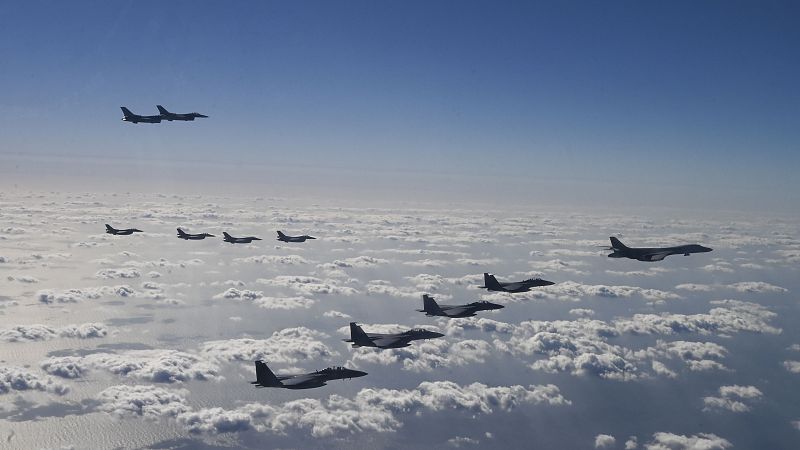Europe’s landmark new missile, warship projects get cautious industry thumbs-up

European pledges to cooperate on missile defence, a next-generation combat vessel and more have received a cautious thumbs-up from industry leaders.
The news came on Tuesday, as the main industry lobby group announced a remarkable 17% year-on-year increase in turnover.
But the EU’s fledgling defence sector, dwarfed by the likes of the US, still says it needs more long-term certainty to face the threats of the war in Ukraine, and the impact of a second Donald Trump Presidency.
Though military spending is normally national, some EU countries want to pool resources – via a set of decisions set to be inked on Tuesday, as defence ministers visit Brussels for a regular meeting of the EU’s Council.
“I really support the initiatives that are cross-European," Micael Johansson, CEO of Saab, one of the EU’s leading defence manufacturers, told reporters in response to the news – adding that consortium rules on eligibility and access to funds still need to be clarified.
“It's the right sort of areas: drone capability, small technologies, integrated air and missile defence systems are absolutely examples that we lack in the European perspective,” Johansson added.
With war now on the EU’s borders, “if we can't get our act together now, through collaborating and also from the national perspective, then I don't know what we need to do,” he said.
Missile defence
Air defence has emerged as one of the leading candidates for European collaboration, gaining backing from European Commission President and ex-defence minister Ursula von der Leyen.
The hope is that Europe would be protected from a Russian attack, in a similar way to Israel's Iron Dome technology.
But a German proposal for a European Sky Shield Initiative has been criticised for its reliance on US and Israeli providers, including Raytheon, makers of the Patriot missile.
An air shield also carries a huge price tag, potentially hundreds of billions of euros, and proposals to fund it through common debt face political problems of their own.
The problem has become all the thornier given the prospect that a Trump administration will withdraw from NATO, or start a trade war by placing 10% tariffs on European imports.
In a report also published on Tuesday, ASD – a lobby group which represents 4,000 European companies in aerospace, security and defence, in locations including the EU, UK and Turkey – said its members’ defence turnover had risen 17% to €159 billion, with similar growth in the air, sea and land sectors.
That surge comes as European governments look to aid war-torn Ukraine and bolster their defences after decades of relative security.
But domestic suppliers often can’t keep up, leaving European governments looking to acquire weapons and other technology from overseas, chiefly the US.
“When it comes to the growth, I think we are probably running as fast as we can,” with further expansion requiring long-term certainty – such as by letting the European Investment Bank invest in military tech, Johansson said.
For Guillaume Faury, the CEO of Airbus and President of ASD, growth rates in the defence sector are surprisingly high – but he warned policy was still too focused on immediate threats.
"When you dig into the reasons for this [17%] number, it's mainly driven by short-term replenishment, ammunition, missiles and what is needed to support European countries supporting Ukraine,” Faury told reporters.
He agreed the new collaboration projects were the right focus – but added that “far more” needs to be done.
"We need to take our eyes from the very short term, which means to face the current situation, to take a longer view ... becoming more resilient as Europeans and therefore more sovereign,” Faury said.
Yesterday

